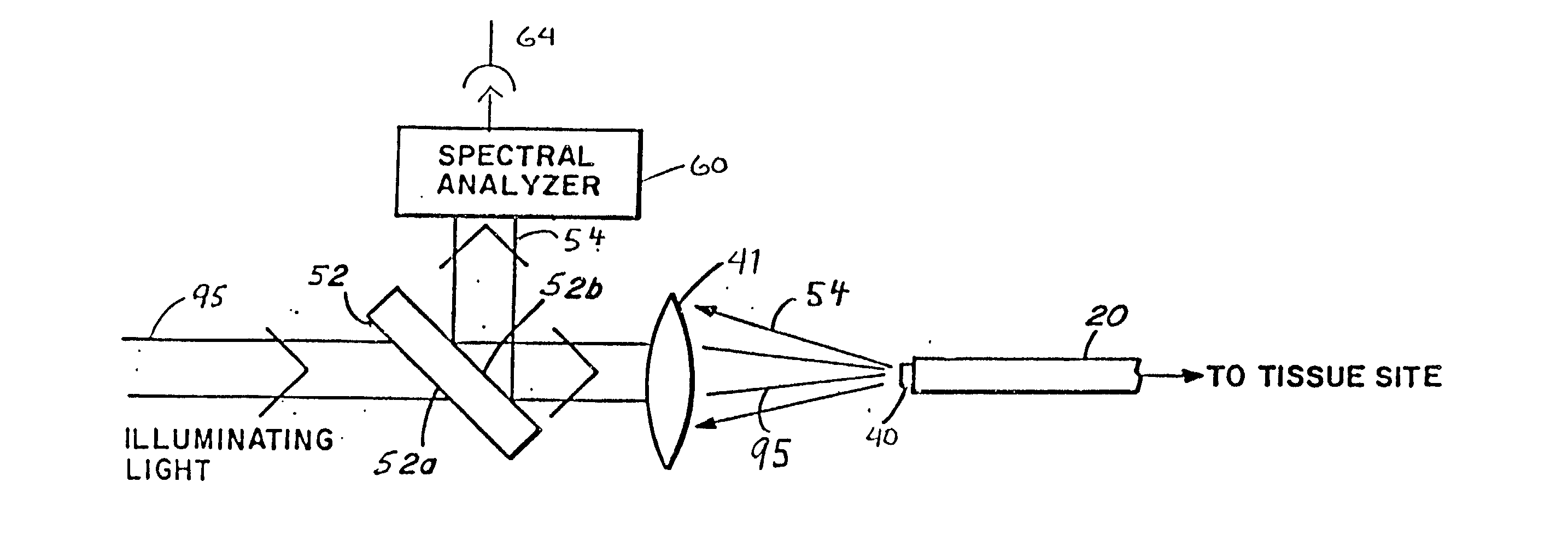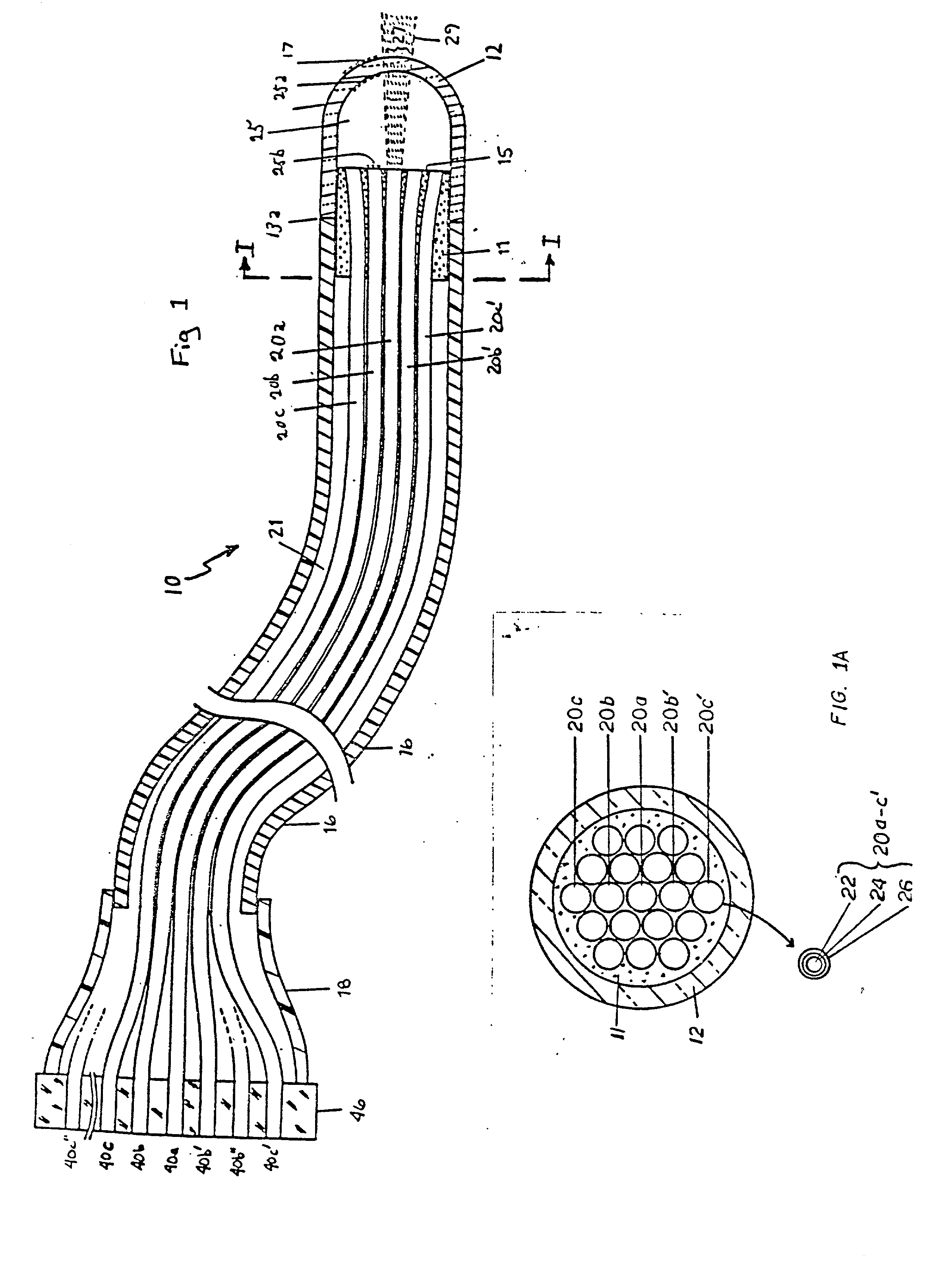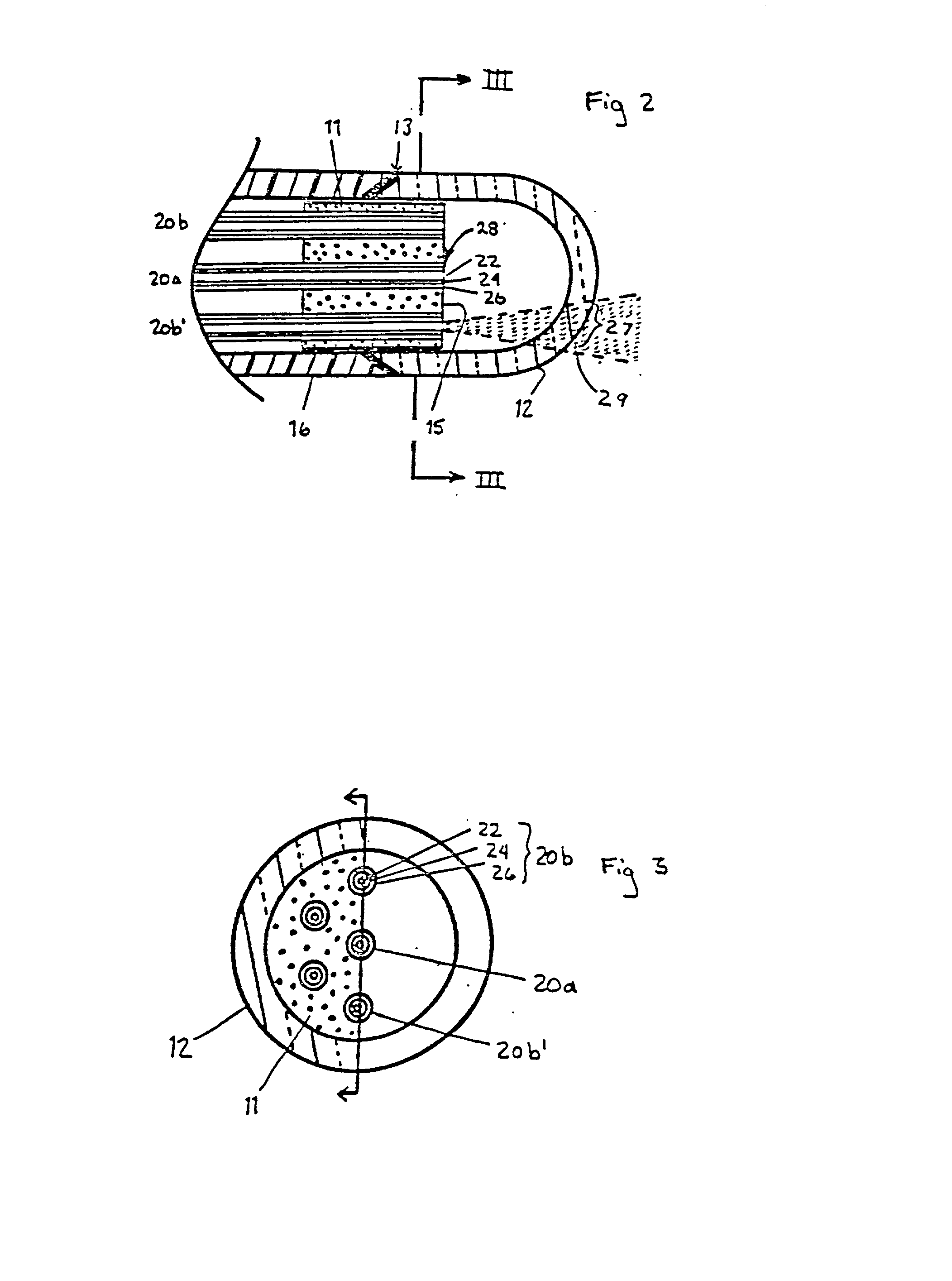Laser ablation process and apparatus
a laser ablation and process technology, applied in the field of laser ablation process and apparatus, can solve the problems of insufficient flow, inability to visualize or treat the flow of the device, and limited information about tissue diagnosis, so as to reduce fresnel reflection, reduce high-unwanted heat transfer, and maximize the effect of transmitted ligh
- Summary
- Abstract
- Description
- Claims
- Application Information
AI Technical Summary
Benefits of technology
Problems solved by technology
Method used
Image
Examples
Embodiment Construction
[0059] Components
[0060] Laser Catheter, Preferred Embodiment
[0061] FIG. 1 shows the preferred embodiment of the entire laser catheter 10 in broken longitudinal section. It is terminated at the distal end by the optical shield 12 and at the proximal end by the fiber optic coupler 46. The flexible catheter body 16, with lumen 21, is typically 1 / 2 to 2 meters long and is designed for insertion into or in contact with the patient. A protective enclosure 18 which connects the catheter body 16 to the coupler 46 is preferably short but may be of any length. The optical shield 12 is a transparent enclosure made of fused silica, glass, or sapphire or other optically transparent material capable of withstanding heat, steam and high laser power. Optical transparency may include ultraviolet, visible and infrared light, depending on the light and laser sources used.
[0062] The distal end of optical shield 12 of FIG. 1 is shown with a hemispherical cross section, but it may also be rectangular, fl...
PUM
| Property | Measurement | Unit |
|---|---|---|
| Time | aaaaa | aaaaa |
| Angle | aaaaa | aaaaa |
| Power | aaaaa | aaaaa |
Abstract
Description
Claims
Application Information
 Login to View More
Login to View More - R&D
- Intellectual Property
- Life Sciences
- Materials
- Tech Scout
- Unparalleled Data Quality
- Higher Quality Content
- 60% Fewer Hallucinations
Browse by: Latest US Patents, China's latest patents, Technical Efficacy Thesaurus, Application Domain, Technology Topic, Popular Technical Reports.
© 2025 PatSnap. All rights reserved.Legal|Privacy policy|Modern Slavery Act Transparency Statement|Sitemap|About US| Contact US: help@patsnap.com



